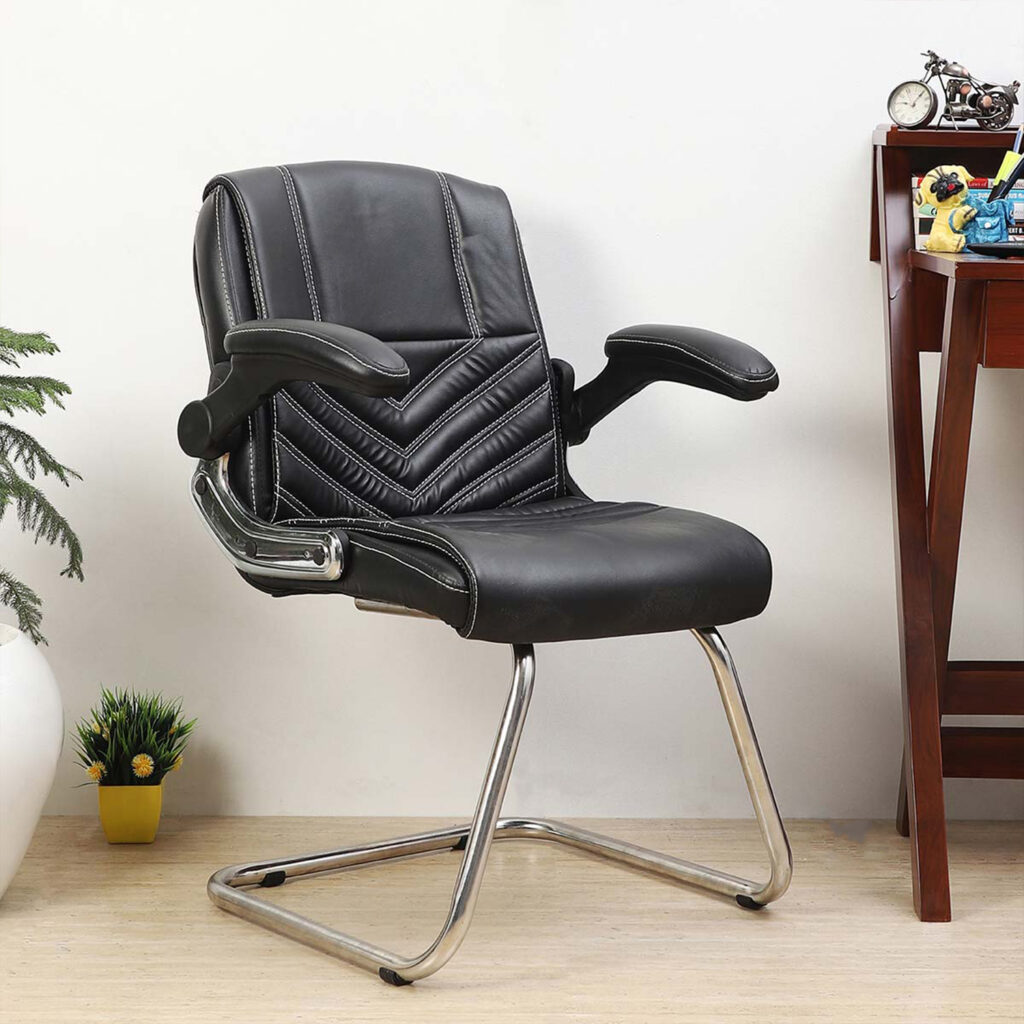Although they frequently get less attention than ergonomic task chairs for staff, best visitor chairs play a critical role in determining how your clients, partners, and potential hires perceive your business. A well-maintained, fashionable, and cozy visitor chair conveys a lot about your professionalism, attention to detail, and concern for guests. The material you choose for visitor chairs is one of the most important considerations because it should balance appearance, longevity, comfort, and upkeep while also staying within your budget and representing your brand.
Why are materials for a chair important?
The overall appearance and perceived quality are influenced by its appearance and feel. Even during short waits, guests should feel at ease rather than agitated.The advantages of ergonomic visitor chairs go well beyond your guests’ immediate comfort. They make the workplace more upbeat and productive in many small but important ways. First of all, they improve the perception of your brand. A business that invests in comfortable, high-quality furniture, even for its guests, shows that it is dedicated to quality and detail-oriented. A high-quality material will withstand deterioration, guaranteeing that the chairs will continue to look nice for many years. Time and money can be saved by stain resistance and ease of cleaning. The cost of various materials influences the budget.
Leather
It is incredibly resilient, feels supple and soft, breathes well, and gradually acquires a lovely patina. It is fire-resistant, has a great visual appeal, and is simple to clean with the right maintenance. But it costs a lot, needs special cleaning supplies and sporadic conditioning, and fades and scratches easily in the sun. For executive waiting rooms, upscale boardrooms, and offices seeking a timeless, opulent, and memorable impression, genuine leather is perfect. PU leather is much less expensive than real leather, comes in a variety of hues and textures, is water-resistant, animal-friendly, and is simple to clean. Its drawbacks include being less breathable than real leather, feeling sticky in hot weather, and being less resilient.
Fabric
Fabric is extremely versatile for a variety of office designs because it offers the most options in terms of color, pattern, and texture. Olefin, acrylic, polyester, nylon, and wool blends are common varieties. In general, it is less expensive than leather and has the qualities of comfort, breathability, and sound absorption. However, fabric may show wear more quickly in high-traffic areas, trap dust and allergens, and be prone to staining, particularly light colors. Deeper stains necessitate more frequent vacuuming and expert cleaning. Fabric is perfect for offices seeking a cozy, welcoming, and adaptable look, as well as general waiting areas and collaborative spaces.
Mesh
Mesh, made popular by ergonomic task chairs, is becoming more and more popular in visitor seating because of its breathability and contemporary appearance. Excellent breathability, a lightweight feel, a modern and contemporary appearance, and frequently flexibility that conforms to the body are some of its advantages. Depending on the design, mesh can provide good lumbar support and is long-lasting and simple to clean. However, compared to fabric, it has fewer color options, can seem less visually substantial than upholstered chairs, and lower-quality mesh can sag over time. Particularly in warmer climates, mesh is perfect for open-plan offices, tech companies, and modern workplaces where breathability and a sleek, minimalist look are desired.
Metals
Because of their strength, longevity, and modern appeal, metal frames are widely used in office furniture. They are mostly used for chair frames, but they are also occasionally used for seats and backs in minimalist designs. Aluminum and steel are among the varieties. Metal has a strong weight-bearing capacity, is incredibly long-lasting and durable, is easy to clean, and has an industrial or modern appearance. Aluminum can be lightweight as well. Metal, which is frequently combined with fabric, leather, or mesh for added comfort, is perfect for high-traffic areas where durability is crucial, modern offices, and industrial designs.
Polycarbonate
Modern visitor office chairs are increasingly made of high-quality plastics because of their adaptability, affordability, and contemporary style. Typical examples are polycarbonate and polypropylene. They come in a wide range of colors and creative designs, are lightweight, easy to clean, spill and stain resistant, and frequently have stackable options to save space. Plastic chairs, frequently paired with upholstered seat pads for comfort, are perfect for breakrooms, training rooms, busy casual waiting areas, start-ups, and modern offices looking for a colorful, practical, and affordable solution.
Conclusion
The comfort of your guests and the perception of your brand are directly impacted by the material you choose for office visitor chairs, making it a strategic choice that goes beyond simple aesthetics. As discussed, every material like leather, fabric, mesh, and metals, offers a different combination of advantages and factors to take into account with regard to comfort, durability, appearance, and upkeep.
For more details, visit: https://www.earthlyblogging.com/

